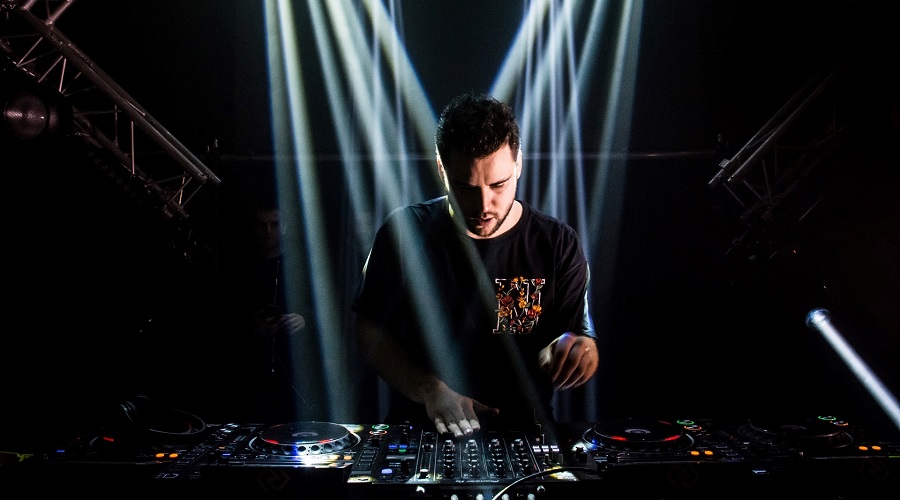There’s no denying that the music industry has evolved dramatically in the past few decades. Rock isn’t dominating the Billboard Hot 100 anymore, and electronic music has largely taken over pop radio. When did all of this happen?
In the 1970s, electronic music was used to describe an energy-charged, beat-driven type of music that was ambiguously referred to as “disco music.”
Nowadays, electronic music has become the cornerstone of progressive dance culture. It comprises hundreds of genres and subgenres played across millions of nightclubs, raves, and festivals.
I’ve created this EDM guide to take you through some of the most prominent types of electronic music. Let’s dive right in!
5 Types of Electronic Music You Should Know About
The EDM scene is as expansive as ever, but there are five main genres that help make up the identity of electronic music.
1. House
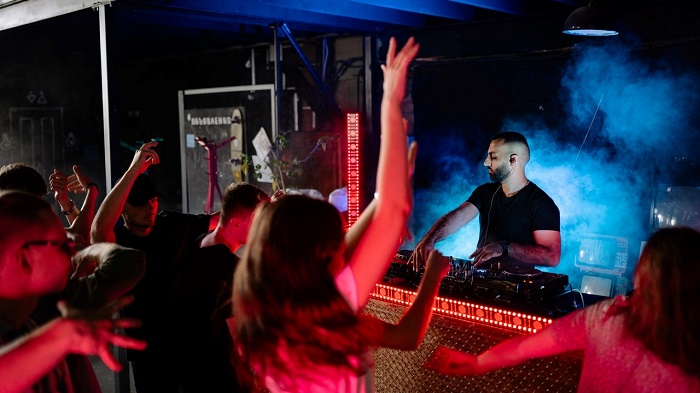
House music is widely regarded as one of the oldest genres of electronic music. It’s perhaps the only electronic music genre to be incorporated by mainstream pop artists like Madonna and Janet Jackson.
The beat is characterized by a uniform four-on-the-floor rhythmic pattern in 4/4 time. The tempo varies by genre but typically stays between 120 and 130 BPM.
It’s easy to recognize house music; all you need to do is look for the nostalgic kick drum of a Roland TR-808 (or other prominent drum machines from the 80s) with open hi-hats in between.
Tech House
Tech house is, by far, my favorite type of house. It retains the same structure of house music but replaces the kick drum with a shorter and darker kick. The snares are noisier and the hi-hats feel more shallow.
So, what do I love most about tech house? The groovy bassline!
It’s consistent, undemanding, and just perfect to dance to for hours on end. Techno, on the other hand, is usually much more intense and story-driven.
Tech house started spreading in Europe in the early 2000s, but it didn’t become popular until a few years ago.
Nowadays, tech-house artists like Jamie Jones, Fisher, and Green Velvet have been dominating the Beatport Top 100.
Afro House
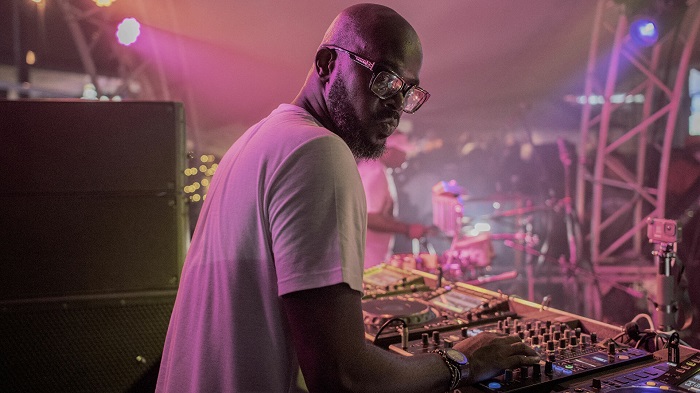
Afro house originated in South Africa as early as the 1990s, but it only became popularized in the mid-2000s.
It borrows elements from deep house and progressive house, but there’s no denying that afro house has a truly unique sound to it.
Afro house has one distinctive element that sets it apart from the rest of house music; its tempo fluctuates from track to track and artist to artist.
Some afro house music is played at 85 bpm, while others range from 120 to 150 BPM.
If you’re new to afro house, Black Coffee serves as the best example of how these soulful and tribal sounds are played.
Deep House
Deep house is characterized by muted basslines, slower tempos, and soulful vocals. It’s usually played at 110 to 120 BPM and incorporates advanced chord structures and soft pad sounds.
Deep house has only started to gain popularity in the past decade, but its origins go way back to 1985 when Larry Heard released “Mystery of Love.”
So what sets deep house apart from the other subgenres? The heavy influence of jazz, soul, and funk. Synth pads and chords that are identical to jazz music are found in almost all deep house tracks.
Acid House

Acid house has existed since the mid-1980s, but it wasn’t until the early 1990s that it became popularized in the rave scene.
It’s somewhat difficult for me to explain what the acid house sound is, but it’s basically the squelching sound of an electronic bass synthesizer.
It all started with the Roland TB-303 sequencer when artists were able to create a chain of intricate patterns and basslines using the synthesizer’s different buttons, knobs, and switches.
So, how much has acid house evolved in the last 30 years? It didn’t.
It’s still mainly centered around the classic Roland synthesizer sound. In fact, the demand for the TB-303 has become so high that the cheapest second-hand one you can buy can cost you up to $1500.
2. Techno
Techno traces back to the early days of electro-pop in Germany, but it wasn’t until it made an appearance in the United States that it started to gain popularity.
Artists used the Roland TR-808 drum machine and TB-303 synthesizer to make techno music. It’s characterized by the same four-on-the-floor beats and repetitive bass lines found in house but played at a typically higher BPM (up to 150) with harder sounds.
Nowadays, software emulations and newer drum machines are used to make techno. However, with the accessibility of digital audio workstations, most artists mainly use DAWs to produce the tracks.
Melodic Techno
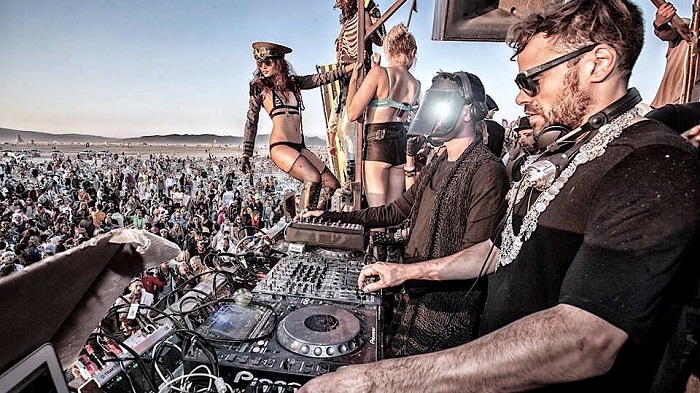
Melodic techno is one of the most popular subgenres of techno. It consists of a progressing structure, emotional harmonies, and arpeggiated melodies. Vocals are often used to make the experience more hypnotic, although it’s not a requirement.
Techno, in general, is often described as “harsh” and “repetitive” by new listeners, but melodic techno has always had a universal appeal.
It’s been around since the 90s, but it wasn’t until the 2010s when it started to gain widescale popularity.
Labels like Afterlife have been one of the reasons Melodic Techno is so popular. They currently have around 50 artists and go on world tours every year.
The best example of the melodic techno sound is any track by Tale of Us. They’re the founders of Afterlife and have been constantly pushing the boundaries of techno music.
Deep Techno
Deep techno is a newer subgenre of techno that retains the melodic lead of melodic techno. To the inexperienced ear, deep techno may sound identical to melodic techno.
However, deep techno borrows elements from acid house and dub techno, and it frequently features R&B vocals.
I consider deep techno somewhat darker than melodic techno. Don’t get me wrong, it’s still heavily fixated on the dancefloor, but the “acid sound” makes it much more intense.
A lot of tracks are incorrectly labeled as deep techno, partly because Beatport categorizes many deep techno tracks as tech house and progressive house.
If you want to know what deep techno really sounds like, listen to artists like Stan Kolev or Rampa.
Industrial Techno
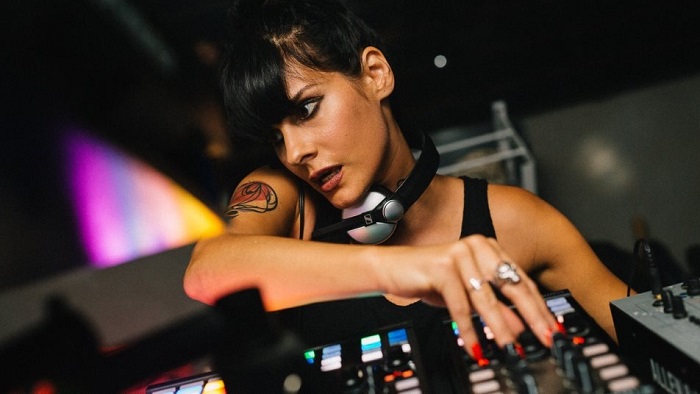
Industrial techno may not appeal to everyone, but you can’t deny that there’s a certain beauty in the metallic aesthetics and aggressive reverb.
Industrial techno is exactly how you’d picture it; aggressive metallic sounds across hard four-on-the-floor beats. It reminds me of robots, conveyor belts, and heavy-duty machines.
Originating in the 1990s, industrial techno found its place in underground bunkers and remained somewhat popular in the rave scene.
Nowadays, artists like Rebekah, Schwefelgelb, and Blush Response, have been keeping the subgenre alive with some relentless sets.
Hardcore Techno
Hardcore techno sounds a lot like industrial techno, minus the sci-fi sounds. It’s played at an even faster tempo (sometimes reaching 200 BPM) and distorted kicks.
Hardcore techno originated in the Netherlands, Germany, and the United Kingdom, although it’s especially popular in Germany and Belgium nowadays.
Hardcore techno is such an expansive genre that it spawned several other subgenres, like gabber, breakcore, industrial hardcore, and speedcore.
The intense synthesized bass and distorted rhythm create a somewhat violent atmosphere in the rave scene, but many claims that hardcore techno makes them calmer.
Since they project all of their anger on the dancefloor, hardcore techno enthusiasts consider themselves peaceful people!
Minimal Techno

Minimal techno is a less intense, stripped-down version of techno. It emerged in Germany in the early 1990s and had global success.
I listen to minimal techno while working, but a set by Richie Hawtin would keep me up dancing all night long.
Minimal techno is played at 125 to 130 BPM. It focuses on the middle frequencies instead of the loud, thumping drum kick.
You can find many variations of minimal techno. My favorite is Boris Brejcha’s high-tech minimal techno, which wreaked havoc in Tomorrowland 2018 in Belgium.
3. Trance
Trance is considered Techno’s more optimistic brother. It rose to popularity in the 1990s and was described as “fast-paced, energetic, and uplifting.”
Trance is a form of hypnotism that resembles a psychedelic trip, and trance music aims to portray just that.
This is done through a musical structure that builds tension with one or two peaks and drops throughout the track.
The high tempo of 135-150 BPM creates an atmosphere with explosive energy. Pair this with the uplifting music and occasional vocals and you’ll understand how people can become addicted to trance.
Psytrance
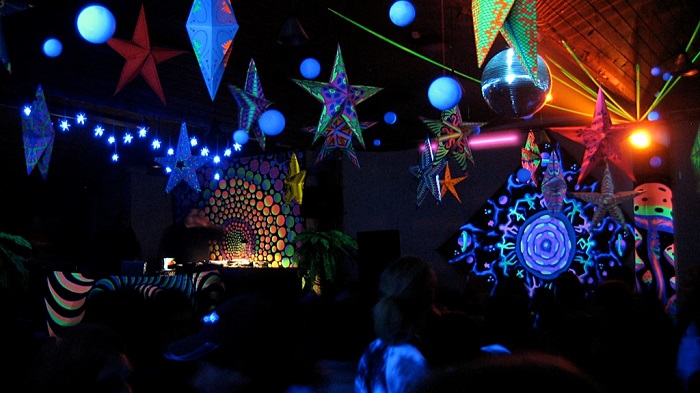
This subgenre is trance on steroids. Psytrance is short for psychedelic trance, and is meant to make your hypnotic state music more “trippy.”
With tempos that go up to 200 BPM and a relentless bass beat, psytrance is similar to hardcore, speedcore, and other dark underground styles.
With that said, the uplifting melodies and crisp bassline make psytrance much more immersive than heavy basslines and muted mid frequencies.
There are further subgenres within psytrance. There’s dark psytrance, progressive psytrance, and melodic psytrance. Each subgenre has its own appeal, but melodic psytrance is the essence of psytrance.
Progressive Trance
Progressive trance incorporates elements from techno and house while retaining the peaks and drops of classic trance.
I prefer progressive trance for two reasons. First, the emphasis on the high frequencies makes the experience more transcendental. Second, vocals are commonly included in the tracks, which makes the tracks more memorable.
If you want to listen to trance for the first time, try listening to a progressive trance mix for the ultimate experience. You’ll immediately feel all the negativity slipping away.
Acid Trance
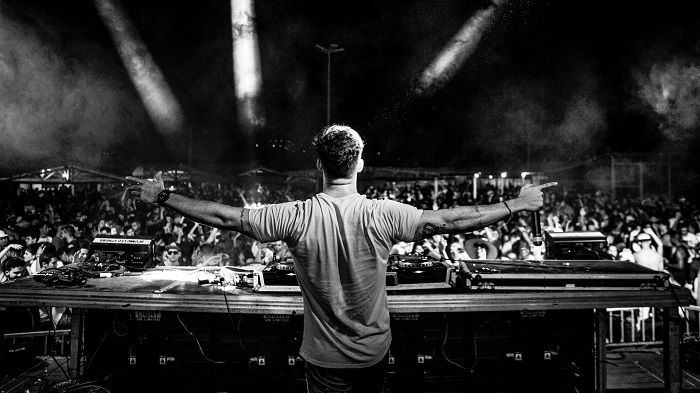
We’ve talked about the “acid” sound before in house music, but did you know acid trance was a thing, too?
The Roland TB-303 makes a return with its trademarked sound and takes the psychedelic experience further.
Originating in Belgium in the 1990s, the acid house basslines truly evolved the classic trance genre.
Aside from the acid beats, eclectic samples are used to add to the surrealism of the music. Acid trance is somewhat similar to psytrance but focuses more on uplifting basslines than pounding beats.
4. Jungle
Jungle music originated in the 1990s in the United Kingdom. It borrows elements from reggae, funk, and hip hop, which gives it an extremely distinguishable sound.
The style of jungle consists of fast breakbeats, syncopated samples and effects, and deep basslines.
Although jungle had a rough start, it exploded in popularity in the mid-90s when M-Beat’s “incredible” hit the UK top 40 list.
Nowadays, jungle isn’t recognized in the mainstream anymore, but it’s still very much alive. There are also several subgenres influenced by jungle, including drum and bass, and the jungle sound is always evolving with new soundscapes.
5. Drum and Bass

Drum and bass is the direct successor of jungle music. It has the same fast breakbeats, heavy basslines, and synth sounds.
D&B borrows a lot of elements from reggae, but in return, it has influenced almost all genres of music, including hip-hop, house, pop, and rock.
Some people say D&B is less complex than jungle, and that’s partly true. The thing is, jungle music is characterized by a distinct bass line that makes it stand apart from the percussion.
D&B, on the other hand, integrates the bass structure with the percussion to create a unique soundscape.
If you’re a fan of reggae music, you’ll love D&B. Be sure to check out some sets from Ragga Twins or Stevie Hyper D to get a sense of the reggae experience.
Breakcore
Breakcore is exactly as if D&B, jungle, and hardcore had a baby. The complex breakbeats at high tempos make the experience much more intense.
Breakcore is especially appealing because of its wide array of sampling sources. Any sampling sound within the musical spectrum can be incorporated into breakcore to go with the frantic rhythm section.
If you want to listen to breakcore, DJ Scud’s is regarded as one of the inventors of the genre. Ever since co-founding his record label in 1997, DJ Scud has been using his raggacore and R&B techniques to create new soundscapes.
Liquid Funk
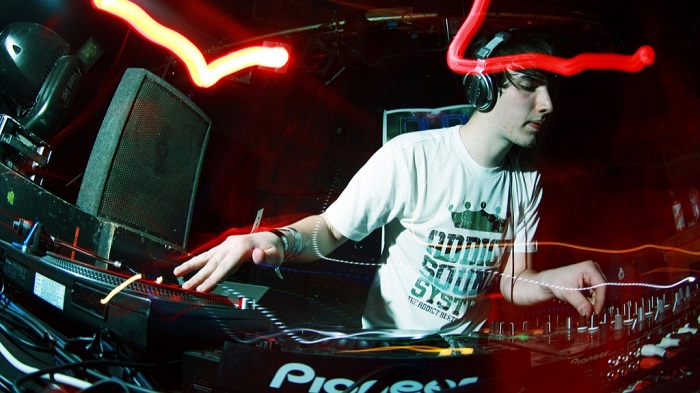
Liquid funk is also known as liquid drum and bass. It’s exactly how you’d expect a D&B track to be but with added melodies and more instrumental layers.
Liquid funk didn’t gain popularity until the mid-2000s, when artists like Fabio, Calibre, London Elektricity started defining the genre with added elements of funk, house, and trance music.
If you listen to liquid funk, you’ll notice the same uplifting energy of trance music. The sentimental harmonies and ambiance create an atmosphere filled with emotions.
6. Dubstep
We all remember Skrillex and the commercial success of dubstep in the early 2010s. Dubstep music emerged with an abnormal style of syncopated patterns and heavy reliance on bass drops.
In dubstep, the bass note is extended and distorted in such a way that it “wobbles.” This is why dubstep has been nicknamed wobble-step.
Dubstep hit mainstream popularity when pop artists, like Britney Spears, started using dubstep sounds in their tracks.
By 2009, dubstep had worldwide recognition and many EPs regularly hit the top charts. You can hear the distinctive bassline of dubstep in Taylor Swift’s “I Knew You Were Trouble,” which hit the number-one spot on Billboard’s U.S. Top 40 chart.
Dubstep has many subgenres with unique characteristics. To this day, there are new subgenres like filthstep, robostep, and techstep surfacing every day.
Neurostep

Neurostep incorporates elements from D&B and Neurofunk to create this sci-fi-sounding subgenre. The sound is characterized by deep, robotic samples that create a sort-of cold atmosphere.
The bassline is heavily compressed and filtered, almost distorted. It’s played at a slightly faster BPM than dubstep (around 160 BPM) and paired with dark and robust samples.
Neurostep comes directly from a subgenre called Neurofunk. It uses complex rhythms with fast breakbeats and layered soundscapes.
If you listen closely, you’ll find a lot of elements from hip-hop, house, techno, and even jazz!
Deathstep
If you like death metal, then you’ll probably love deathstep. Featuring the same distorted electric guitars and deep, growling vocals, deathstep is definitely not for the faint-hearted!
Some people enjoy listening to deathstep because it helps them project their anger and channel out the negativity.
Chillstep
Chillstep retains all the elements of classic dubstep but with more peaceful sounds and less frantic wobbles.
The more relaxed approach to dubstep has kept chillstep relatively away from the rave scene. However, the slower beats, chill undertones, and mindful basslines make it perfect for daytime listening.
Glitchstep
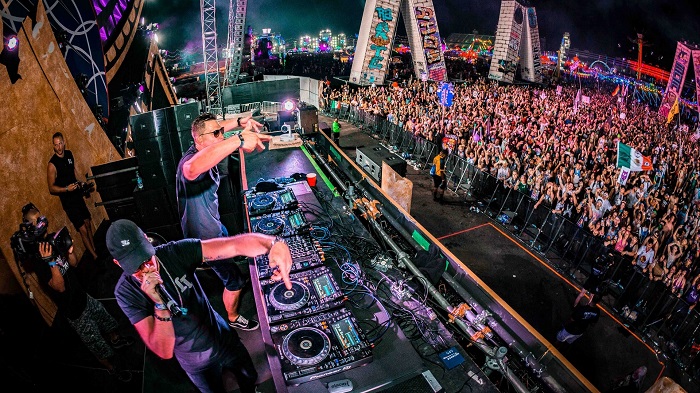
Glitchstep is exactly how it sounds; the bassline wobbles in such a way that you hear “glitching” from the bassline.
Glitching is commonly used across all genres. Samples like vinyl record scratches, computer errors, circuit bending can be broken down and used in the track.
Glitchstep has limited popularity outside of the rave scene, but it’s extremely fun to listen to in the dark setting of a bunker nightclub.
